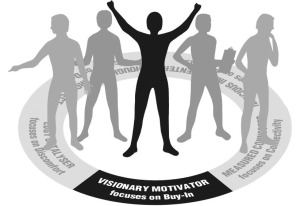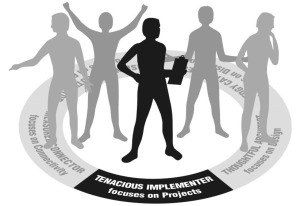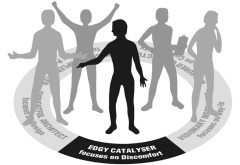You either know why change fails or you don’t
Meaning you are one of the many people who have been on the butt end of change and know only too well why it fails … or … you are one of those managers who implement change and believe mistakenly that the change has succeeded or prefer to blame the ‘resistors to change’ or sometimes blame the senior mangers who have moved on to other things.
Maybe I have organised the universe to only show me organisations and leaders who manage change poorly or maybe I’m not looking in the right direction.
[Actually that’s not strictly true as I have experienced and researched good change management practices and have written them up as case studies in Change Management Masterclass]
 I believe disengagement, disconnection and disenfranchisement sum up, what to me is the key disabler of change. Key stakeholder groups that are not communicated with, not consulted and not involved in the change process cannot to be expected to be overjoyed with the change or with making it happen.
I believe disengagement, disconnection and disenfranchisement sum up, what to me is the key disabler of change. Key stakeholder groups that are not communicated with, not consulted and not involved in the change process cannot to be expected to be overjoyed with the change or with making it happen.
There are all sorts of reasons why managers don’t involve stakeholders – especially staff – but they are missing a trick or two. Indeed in my experience senior leaders and managers do not have a monopoly on the truth. They may (may) have a better vantage point to see what the organisation needs to do to deal with the future challenges; and they may have access to key metrics which tell them the current health of the organisation.
But if they don’t tap into the thoughts and feelings of the workers then they will not win their hearts and minds over.
And a very simple path to follow is to use understand why change may fail according to Kotter’s reserach:
- Not enough sense of urgency or pressure for change
- Failing to create a sufficiently powerful support base
- Not developing a clear vision
- Under-communicating the vision
- Permitting obstacles to block the new vision
- Failing to create short-term wins
- Not aligning structures, systems, policies and skills
- Neglecting to anchor changes firmly in the corporate culture
Although somewhat dated (1995) Kotter’s analysis still holds up and many change managers still use it as an overarching framework.
For now, let’s just look at the first four reasons. Kotter turned them on their heads and said what you need is to Establish a sense of urgency; Form a powerful guiding coalition; Create a vision; and Communicate that vision.
For each of these imperatives those responsible for the change should be able to use them to actively engage different stakeholder groups.
Establishing a sense of urgency could involve front-line staff examining and reporting back on market and competitive realities; managers can be identifying and discussing with their co-workers crises, potential crises or major opportunities; team and departmental meetings can be ensuring that the level of current dissatisfaction or future threat is sufficient to kick-start the change and maintain momentum.
Forming a powerful guiding coalition is about assembling a group with enough power to lead the change effort and encouraging them to work together as a team but it also means ensuring that key stakeholders are engaged and the change team has the necessary sponsorship, power and authority and connection back into the business.
Creating a vision of the future is important for people who are being expected to let go of the past. It includes creating a vision to help direct the change effort and developing strategies for achieving that vision. But it is also having a clear understanding of what you want to achieve from the change and also the route map for getting there.
Communicating the vision requires the use of every vehicle possible to communicate it and related strategies together with clarity around any new behaviours expected and also ensuring people are informed and hopefully engaged with the change by having a shared understanding of and commitment to the direction of the change.
To be sustainably successful each of these tasks really does require engagement, connection and enfranchisement. I personally believe everyone who has a stake in the continued success of the organisation should be involved in helping create it.
Read Full Post »




